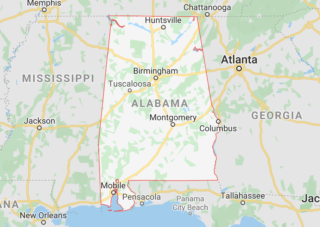The New York Times recently focused on one rural telecom that’s trying to “Rip & Replace” what regulators consider untrusted Chinese network equipment with safer gear. As Inside Towers reported, the fund to reimburse telecoms for accomplishing this is grossly underfunded, to the tune of more than $3B. As the United States and China battle for geopolitical and technological primacy, the fallout has reached rural Alabama and small wireless carriers in dozens of states.
Supply chain issues, bad weather, labor shortages and inflation compound the task, telecoms have told the FCC. The NYT saw a Pine Belt Cellular crew working on a 350-foot cell tower in a forest in Wilcox County, AL. They were trying to replace ZTE gear with replacement equipment from a European company.
But, the new equipment was blocking the beacon. The new problem, discovered early this month, would add at least two more days and blow the budget, said John Nettles, President of the family-owned Pine Belt Cellular. “People in Washington think it’s easy to just swap out the equipment, but there are always problems you didn’t expect, always more expenses and always delays,” he said.
The workers planned to climb the tower to assess if it could hold the weight of an additional three antennas and radio equipment from Nokia. The crew decided they had to pour cement under the tower to create a stronger base for the additional load. The tower will have to hold the old ZTE and new Nokia equipment during the Rip & Replace work to prevent any service interruptions.
The program’s burden has fallen disproportionately on smaller carriers, which relied more on the inexpensive gear from Huawei and ZTE than large telecoms. Given the difficulties of Rip & Replace, some smaller wireless companies now say they may not be able to upgrade their networks and continue serving their communities, Inside Towers reported.
Last month, Senator Deb Fischer, (R-NE), introduced a bill to close the funding gap, Inside Towers reported. Passing it will be challenging, with similar legislation failing twice over the past year and fierce debate in Washington over government spending and the debt ceiling. But “we have to follow up,” Fischer said. “Some of these carriers could go out of business.”
Some wireless carriers immediately stopped their replacement efforts until they get total reimbursement, Inside Towers reported. Huawei declined to comment; ZTE didn’t respond to a request for comment to the NYT.
Pine Belt Cellular is one of the few wireless carriers for 2,000 homes and businesses in five counties. Six equipment manufacturers pitched their gear to him, said Nettles. He chose ZTE because the company offered equipment at less than half the cost of other bids. Pine Belt initially bought $5 million in ZTE equipment, including hundreds of antennas, radios and other gear for its 67 cell towers.
But since restrictions on ZTE and Huawei gear were introduced, Nettles has spent most of his time trying to replace it with equipment from companies like Nokia and Microsoft.
In 2021, Pine Belt applied for $68 million in reimbursements from the FCC. But last July, the agency said that it could only refund costs of up to $27 million. Pine Belt is about 15 percent into its transition away from Chinese equipment and is already $5 million over the FCC’s budget, Nettles told the NYT.
By Leslie Stimson, Inside Towers Washington Bureau Chief





Reader Interactions